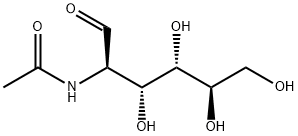Acesulfame K , Analysis standard , 55589-62-3
Synonym(s):
6-Methyl-1,2,3-oxathiazin-4(3H)-one 2,2-dioxide potassium salt;Acesulfame K
CAS NO.:55589-62-3
Empirical Formula: C4H4KNO4S
Molecular Weight: 201.24
MDL number: MFCD00043833
EINECS: 259-715-3
| Pack Size | Price | Stock | Quantity |
| 1G | RMB159.20 | In Stock |
|
| others | Enquire |
PRODUCT Properties
| Melting point: | 229-232°C (dec.) |
| Boiling point: | 210℃[at 101 325 Pa] |
| Density | (solid) 1.81 g/cm3; d (bulk) 1.1-1.3 kg/dm3 |
| vapor pressure | 0.291Pa at 25℃ |
| storage temp. | Inert atmosphere,Room Temperature |
| solubility | Soluble in water, very slightly soluble in acetone and in ethanol (96 per cent). |
| form | Solid |
| color | White crystalline solid |
| Odor | odorless with sweet taste |
| Odor Type | odorless |
| Water Solubility | almost transparency |
| Merck | 14,37 |
| BRN | 3637857 |
| LogP | -2.35 at 23℃ |
| CAS DataBase Reference | 55589-62-3(CAS DataBase Reference) |
| EPA Substance Registry System | Acesulfame-potassium (55589-62-3) |
Description and Uses
Acesulfame potassium is approved for use in food as a sweetener. It is included in the ingredient list on the food label as acesulfame K, acesulfame potassium, or Ace-K. Acesulfame potassium (Ace-K) is regulates as a food additive. The FDA approved acesulfame potassium for use in specific food and beverage categories in 1988 and in 2003 approved it as a general-purpose sweetener and flavor enhancer in food, except in meat and poultry, under certain conditions of use. It is widely used in the food industry, such as mouthwash and soft drinks. However, some researches have found that it does harm to the liver and nervous system[1-2].
Acesulfame-K is the potassium salt of 6-methyl-l,2,3-oxathiazin-4(3H)-
one-2,2-dioxide. This sweetener was discovered in Germany and was
first approved by the FDA in 1988 for use as a nonnutritive sweetener.
The complex chemical name of this substance led to the creation of the
trademark common name, acesulfame-K, which is based on its following
relationships to acetocetic acid and sulfanic acid, and to its potassium
salt nature.
Acesulfame-K is 200 times as sweet as sugar and is not metabolized
and is thus noncaloric. It is exceptionally stable at elevated temperatures
encountered in baking, and it is also stable in acidic products, such as
carbonated soft drinks. It has a synergistic effect when mixed with other
low-calorie sweetners, such as aspartame. Common applications of
acesulfame-K are table uses, chewing gums, beverages, foods, bakery
products, confectionary, oral hygiene products, and pharmaceuticals.
Safety
| Symbol(GHS) |  GHS07 |
| Signal word | Warning |
| Hazard statements | H315-H319 |
| Precautionary statements | P264-P280-P302+P352-P337+P313-P305+P351+P338-P362+P364-P332+P313 |
| Risk Statements | 36/37/38 |
| Safety Statements | 26-36/37/39 |
| WGK Germany | 1 |
| RTECS | RP4489165 |
| HS Code | 2934990002 |
| Toxicity | LD50 in rats (mg/kg): 7431 orally, 2243 i.p. (Mayer, Kemper) |



